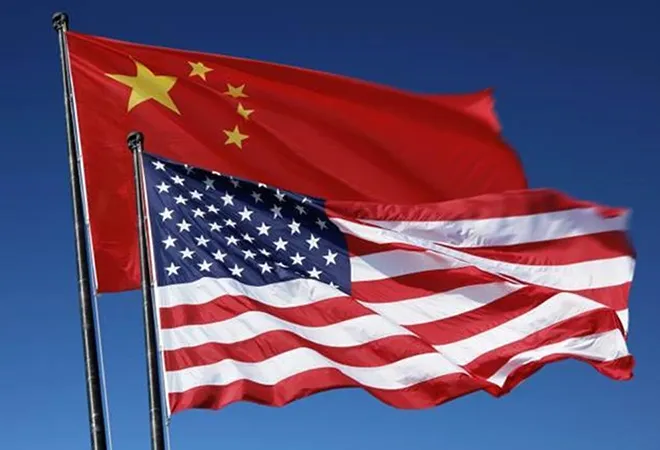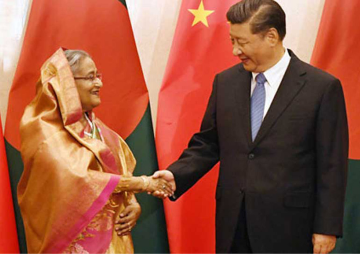After years of talking about a new Cold War, the world got to see its one glimpse a few days back when a Chinese spy balloon floated in American airspace, only to be blown to smithereens but not before leaving enormous debris in its wake. There are of course the remains of the balloon that the US agencies will be studying carefully. But it also led to the demise of some nascent optimism about a possible détente between the two major global powers. It was great spectacle for sure but more than that it was a testament to these trying times in global politics when nothing really is what it seems.
In his annual State of the Union address, US President Joe Biden, was largely focused on domestic issues as he made a case for a widely expected 2024 re-election bid. In his relatively long speech, there was hardly any mention of the saga of the Chinese surveillance balloon with only a warning: “Make no mistake: as we made clear last week, if China threatens our sovereignty, we will act to protect our country. And we did.” He was alluding to the American military shooting the balloon down off the coast of South Carolina last weekend.
The US Secretary of State, Anthony Blinken, too had termed the Chinese balloon over the US as “a violation of our sovereignty” and “an unacceptable as well as an irresponsible action.” He cancelled his visit to Beijing in response and the US intelligence has maintained that the balloon was being used by the Chinese military for spying and was part of an “aerial surveillance program run by the People's Liberation Army out of Hainan.” Apart from the US, other nations that are targeted include Japan, Taiwan, the Philippines and India.
After the hullaballoo that was created by the sighting of the balloon, China had to acknowledge that the balloon was its property. Though it regretted the incident and offered to work with the US to resolve the issue, it continued to insist that it was a civilian airship used for meteorological research, which was blown off course because of bad weather. This latest spat has further accentuated the anti-China sentiment in the US with both Democrats and Republicans demanding strict action against China. For the Biden Administration, this posits a steep challenge ahead as it has shown an interest in keeping channels of communication open with Beijing.
The US Secretary of State, Anthony Blinken, too had termed the Chinese balloon over the US as “a violation of our sovereignty” and “an unacceptable as well as an irresponsible action.”
When Presidents Joe Biden and Xi Jinping had met on the sidelines of the G-20 summit in November last year, they had expressed a desire to avoid conflict and tone down the rhetoric. Ties between China and the US have been on a downward trajectory for years with Xi’s aggression and Washington’s pushback making for a potent mix. The structural reality of a rising power trying to shape the regional order in the Indo-Pacific and beyond in its image has been the driving vector in shaping the US-China relationship over the last decade. While the Trump Administration alerted the American body politic to the challenges being posed by a rising China as a strategic challenger, the Biden Administration has been much more coherent in blending various instruments of statecraft together to frame a policy response.
Competition between China and the US is now a reality across a range of issue areas. In recent months, Pentagon has announced the creation of a Marine Littoral Regiment on Okinawa just as Japan is moving forward with a robust defence strategy, having recently announced a massive $320 billion military build up over the next five years. Washington has long argued for a stronger and more militarily potent Japan to take on China’s expansionist designs in the region. Now, Tokyo is responding with an unprecedented alacrity that will redraw the strategic contours in the Indo-Pacific. America’s alliance with the Philippines has also been reinvigorated with Ferdinand “Bongbong” Marcos Jr., deciding to give US forces periodic access to five military facilities in the Philippines.
The technology competition is also heating up with the US intent on degrading China’s ability to manufacture high-end semiconductors. In October Washington imposed sweeping export restrictions on shipments of chipmaking tools to China. Japan and the Netherlands – the two key nations in the supply chain - have joined the US recently making it a formidable alliance against China. Like-minded nations are increasingly willing to work together on key geoeconomic and geopolitical issues, thereby shaping the trajectory of China’s rise. Burgeoning US-India technology cooperation should also be seen in this light.
The technology competition is also heating up with the US intent on degrading China’s ability to manufacture high-end semiconductors. In October Washington imposed sweeping export restrictions on shipments of chipmaking tools to China.
As China and the US compete, episodes like the “Balloongate” are likely to be the norm than exception. Major power competition always manifests itself through such crises. During the Cold Wat, it took the US and former Soviet Union a long time to come to terms with each other and define some rules of the game. The US-China relationship is much more complex. They remain economically intertwined. Despite rapidly growing political differences, trade between the US and China hit a record high last year. Economic decoupling remains a far-fetched idea as of now.
But China’s reckless behavior is seriously undermining its ability to work with other nations. For a country that a few years back couldn’t make a wrong move, today can’t seem to be able to get its act right. The saga of the Chinese balloon floating through the US airspace has deflated the possibility of a thaw in US-China ties, something Beijing clearly desired. But is the is going to be the modus operandi of China going forward, then the rest of the world has an even bigger problem at hand – how to manage a rising power that has no clue of what it wants!
This commentary originally appeared in Financial Express.
The views expressed above belong to the author(s). ORF research and analyses now available on Telegram! Click here to access our curated content — blogs, longforms and interviews.




 PREV
PREV


